Blackberries
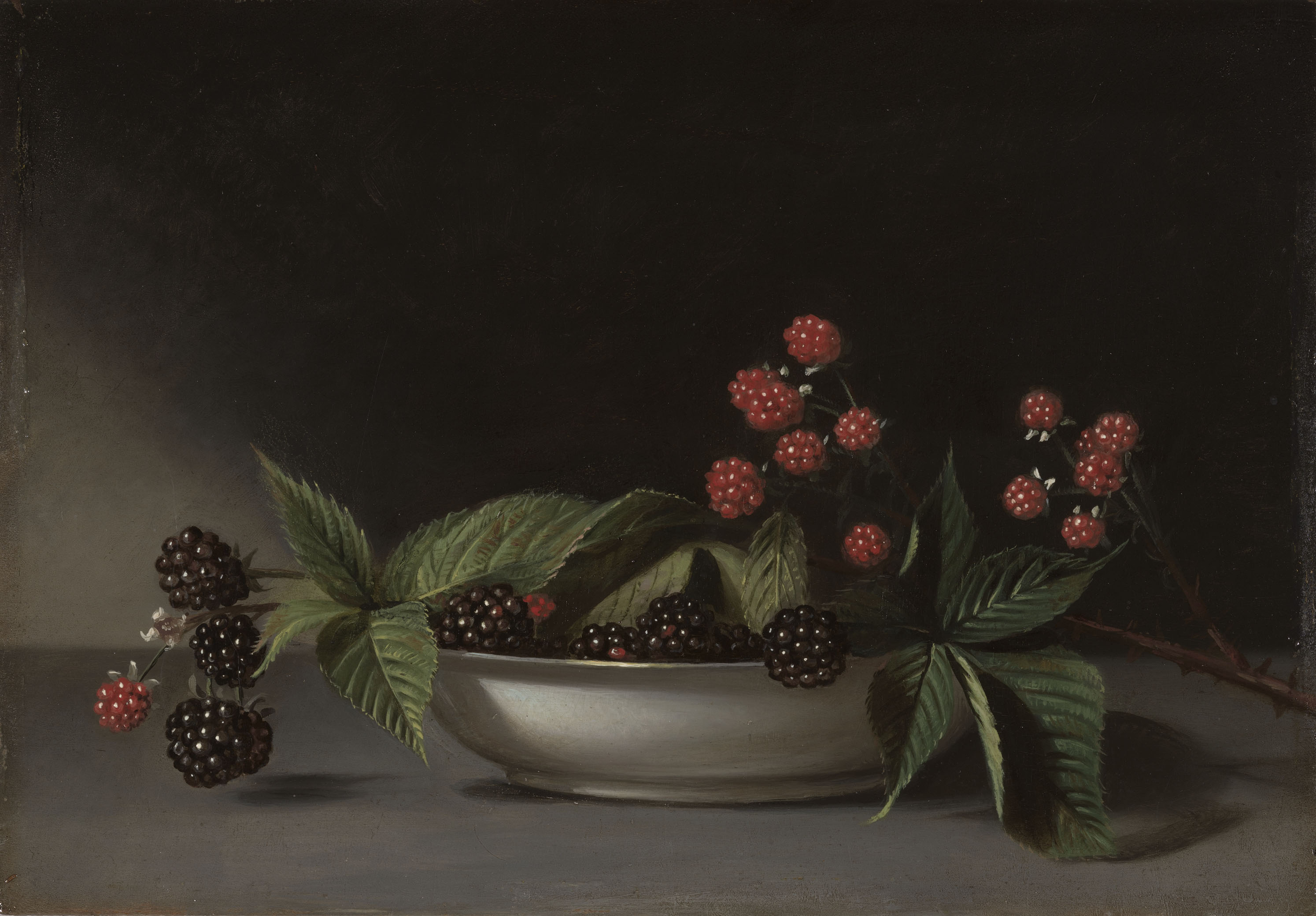
How is a still life like a portrait?

How is a still life like a portrait?
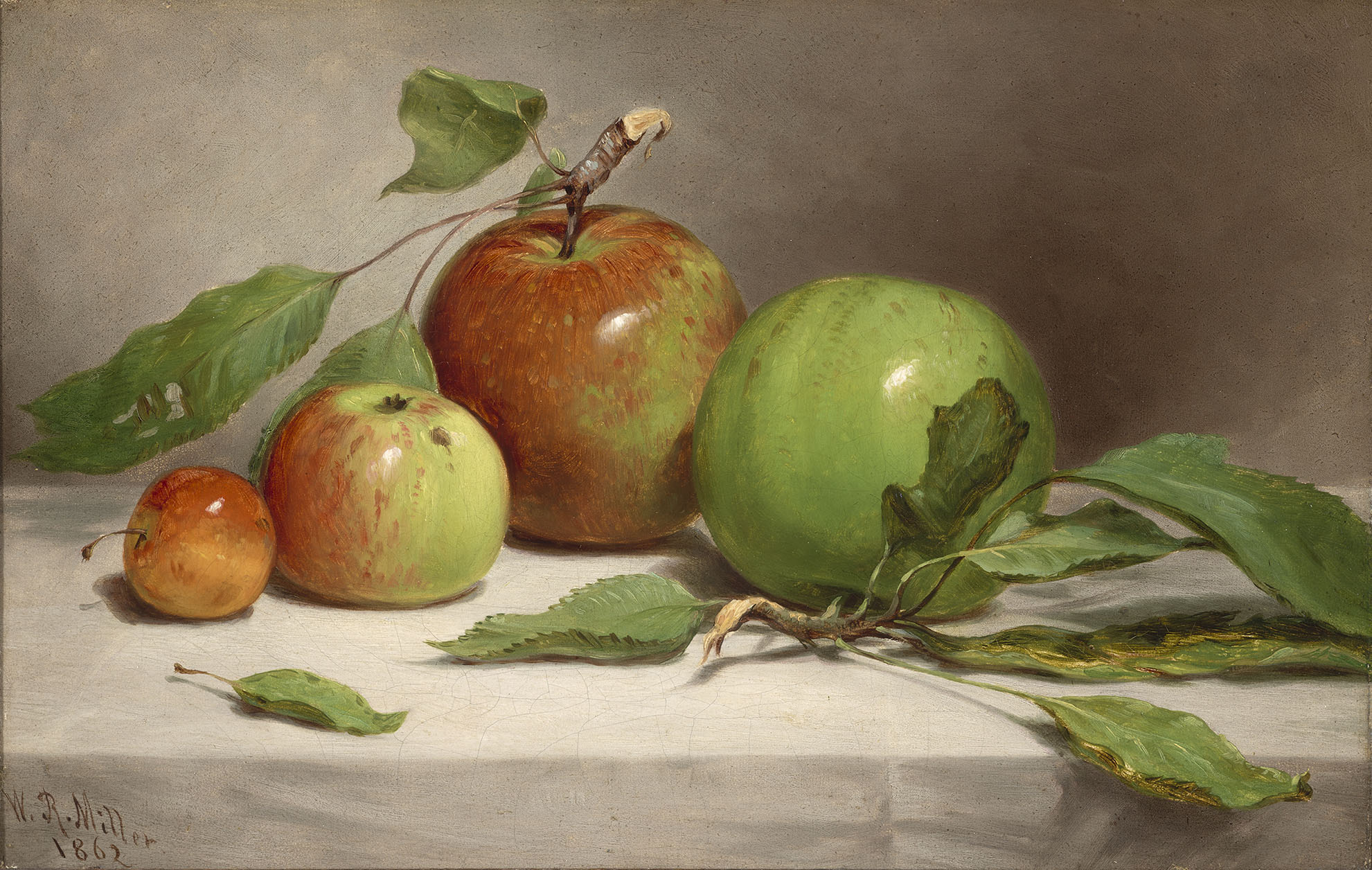
How can we see the passage of time?

How do you reduce, reuse, and recycle?

How do you reduce, reuse, and recycle?
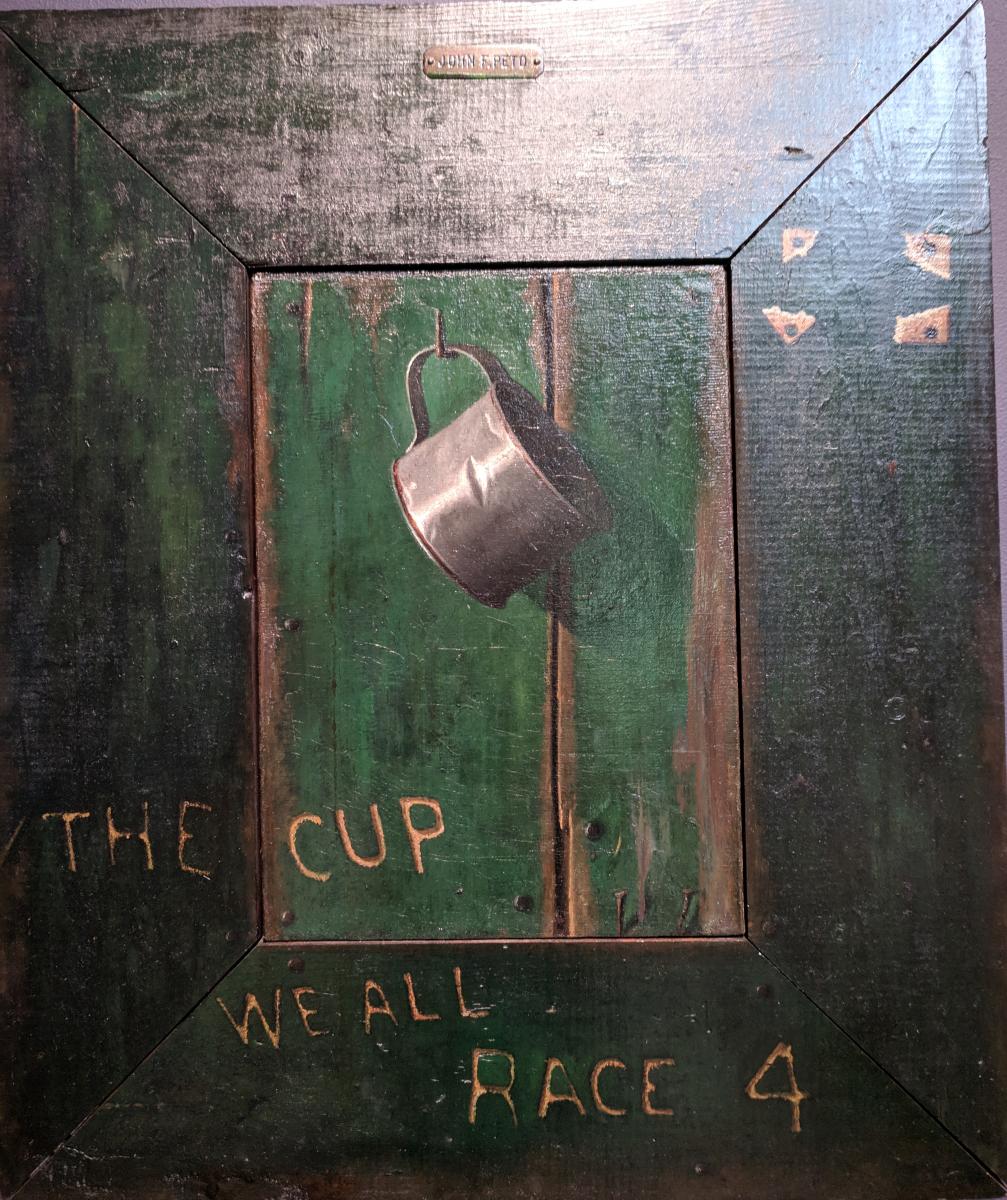
What does the title of this painting mean to you?
The Cup We All Race 4 presents a visual rebus and pushes painting beyond representation to question the boundaries between reality and illusion. The central boards—with their hook and nails, tin cup, and incised letters—are painted on the canvas. But the painting’s frame is made of actual wooden boards, painted to match those depicted. The artist’s game is made even more convincing by the realistic scale of all these objects and the mysterious title.

What does the title of this painting mean to you?
The Cup We All Race 4 presents a visual rebus and pushes painting beyond representation to question the boundaries between reality and illusion. The central boards—with their hook and nails, tin cup, and incised letters—are painted on the canvas. But the painting’s frame is made of actual wooden boards, painted to match those depicted. The artist’s game is made even more convincing by the realistic scale of all these objects and the mysterious title.
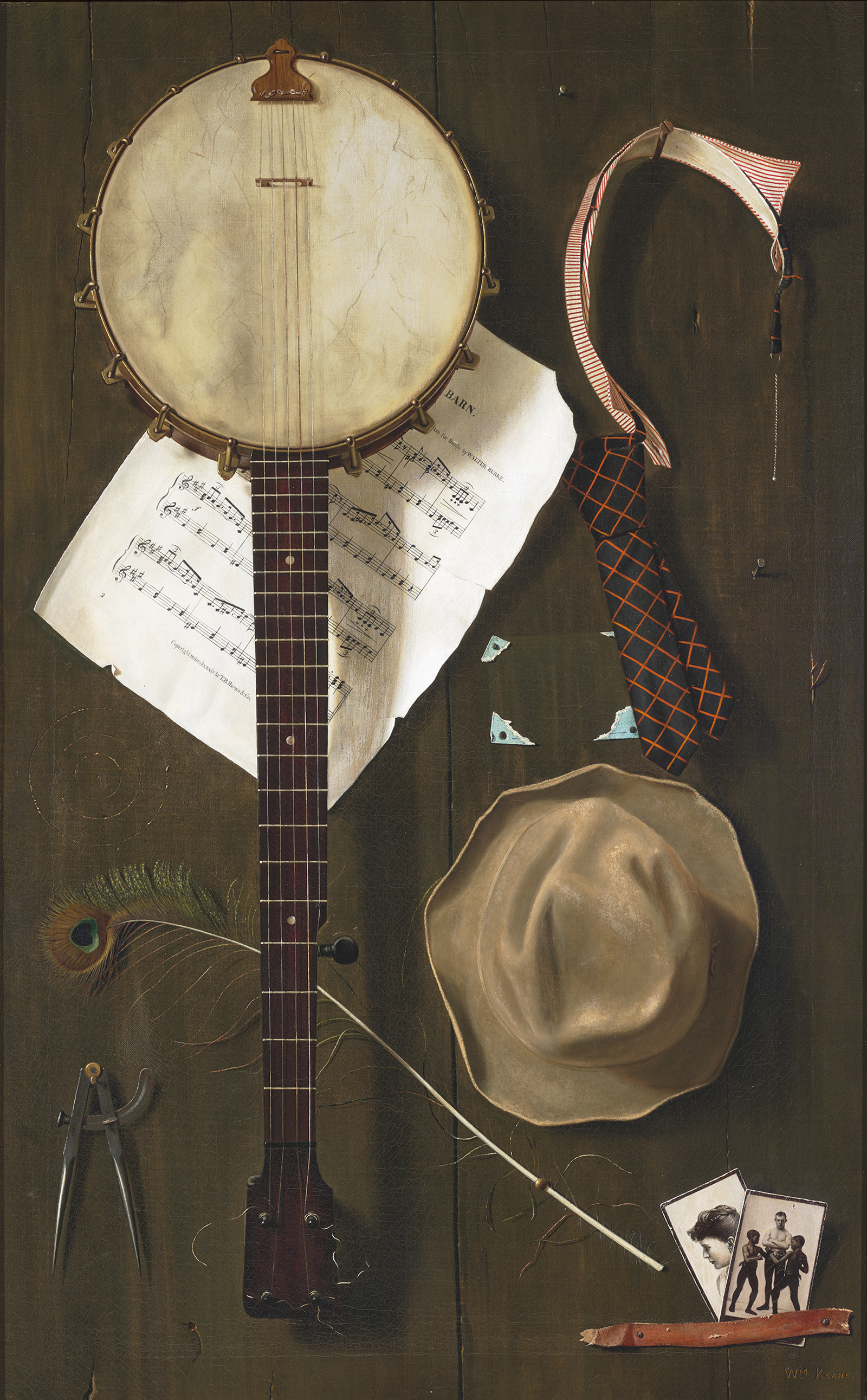
What objects document your life?
In this trompe l’oeil painting, the viewer is shown a set of evocative objects, suggesting an encapsulation of a person’s life as seen through their belongings. A life-sized banjo hanging on a wall is surrounded by personal effects (maybe even the artist’s own): sheet music, a crumpled hat, a peacock feather, and a pair of photographs of two boxers and a pretty young woman (an empty spot suggests another photo or card has been ripped away).

What objects document your life?
In this trompe l’oeil painting, the viewer is shown a set of evocative objects, suggesting an encapsulation of a person’s life as seen through their belongings. A life-sized banjo hanging on a wall is surrounded by personal effects (maybe even the artist’s own): sheet music, a crumpled hat, a peacock feather, and a pair of photographs of two boxers and a pretty young woman (an empty spot suggests another photo or card has been ripped away).
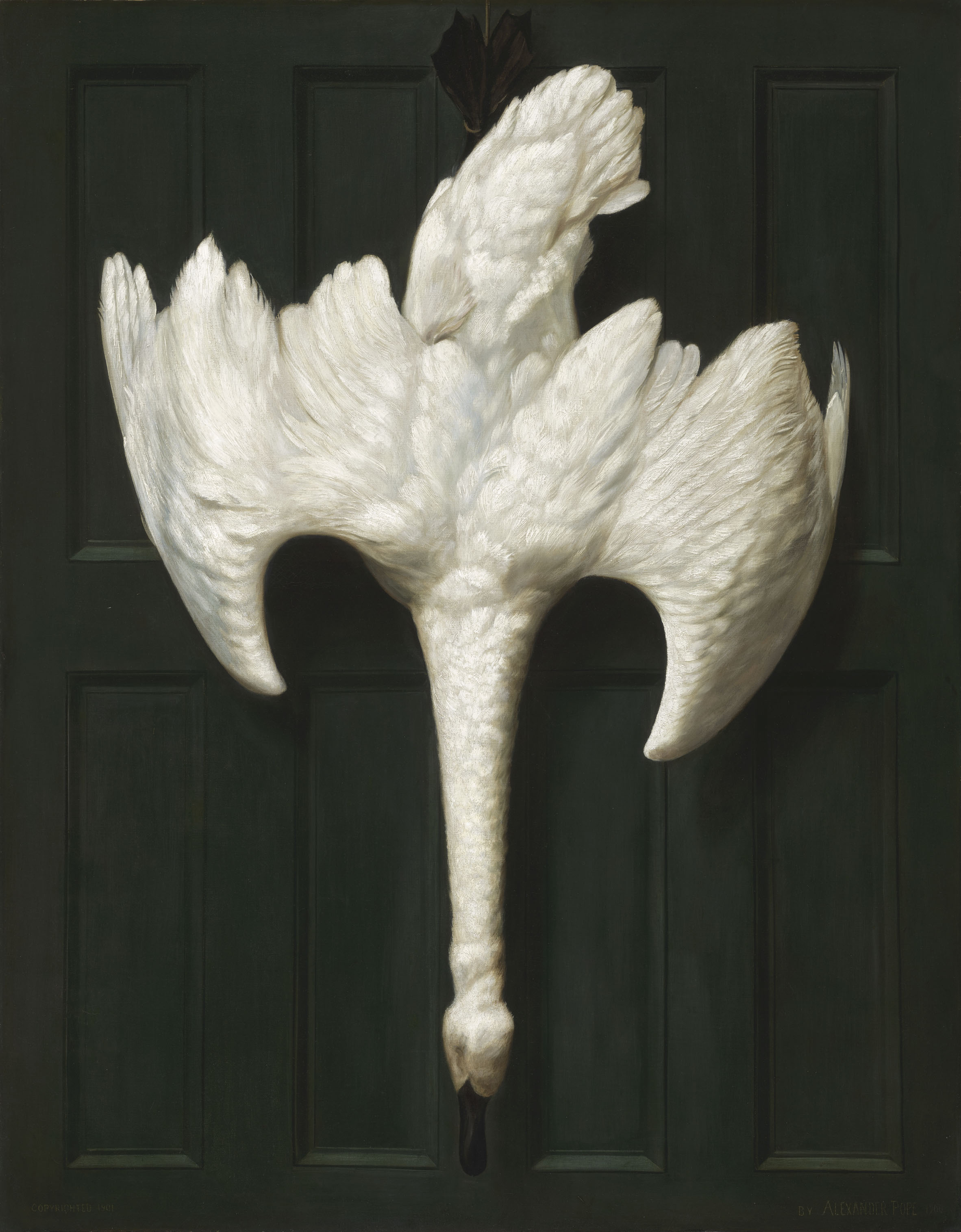
Is it possible to celebrate and condemn at the same time?
The Wild Swan was owned for many years by the Massachusetts Society for the Prevention of Cruelty to Animals. In the early 20th century it came to be known as The Trumpeter Swan, perhaps in response to the suggestion that the painting brought attention to the threatened status of trumpeter swans, who were then close to extinction.

Is it possible to celebrate and condemn at the same time?
The Wild Swan was owned for many years by the Massachusetts Society for the Prevention of Cruelty to Animals. In the early 20th century it came to be known as The Trumpeter Swan, perhaps in response to the suggestion that the painting brought attention to the threatened status of trumpeter swans, who were then close to extinction.